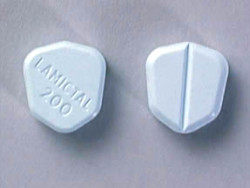Top Class Actions’s website and social media posts use affiliate links. If you make a purchase using such links, we may receive a commission, but it will not result in any additional charges to you. Please review our Affiliate Link Disclosure for more information.

Like all prescription medications, Lamictal carries the risk of side effects, both common and severe. Typically, when a doctor prescribes a medication, he or she has judged that the benefits of the drug outweigh the risks of any side effects that may be encountered.
Common Lamictal side effects that may fade with treatment include headache, stomach pain or nausea, dry mouth, dizziness, sleepiness, insomnia, loss of coordination or blurred vision.
Lamictal and Stevens Johnson Syndrome
Stevens Johnson Syndrome (SJS) occurs when the body responds with severe immune-mediated reaction most often caused by the ingestion of a drug. Often resembling the flu in its early stages, complete with aches, malaise, fever and sore throat, SJS symptoms quickly move into the characteristic rash associated with the disease.
The SJS rash is much more intense than a mild rash that is common with many drugs, and it affects the mucous membranes of the body as well as the skin. The eyes, nose, mouth, genital and anal areas often show signs of the rash which presents with purple or red blisters.
These blisters spread quickly and cause the affected skin cells to die. After the skin cells die, the skin sloughs off in sheets, exposing sensitive skin from deeper dermal layers in the body. Patients’ skin is often compared to looking like that of a burn victim.
Stevens Johnson Syndrome is considered a medical emergency and patients must be hospitalized to receive care. Many times, affected individuals are treated in the hospital’s burn unit since their skin involvement is so extensive.
Other times, they are treated in the intensive care unit. There is no cure for SJS, and treatment revolves around providing palliative care for wounds and infections, providing fluids and electrolytes and keeping the patient stable.
Those affected with SJS may experience symptoms for day, weeks, or months. Depending on the severity of the syndrome, individuals may experience permanent organ damage or vision loss. In some cases, SJS can be fatal, with a mortality risk between 5-10 percent. In a more severe form of SJS called Toxic Epidermal Necrolysis (TEN), 30 percent or more of the body is affected and the mortality rate increases to more than 30 percent.
The Risks of Developing Lamictal SJS
Lamictal labels state that for individuals taking Lamictal for epilepsy, the likelihood of developing Stevens Johnson Syndrome is quite rare: 8 of every 1,000 children under age 16 and 3 out of every 1,000 adults when used as a combined therapy for epilepsy. Children, in general, have a greater risk for developing SJS.
While most times this reaction can seemingly appear out of nowhere, there are some instances where Lamictal use can carry a higher risk of developing SJS .
According to the National Alliance on Mental Illness, patients who are also taking Depakote have a higher likelihood of developing SJS. Additionally, individuals who take a higher than recommended initial dose of Lamictal or those who increase their dosage of the drug too quickly may be at increased risk of developing SJS.
Lamictal SJS Lawsuit Information
If you or a loved one has suffered from Stevens Johnson Syndrome or Toxic Epidermal Necrolysis, following use of Lamictal, you may be entitled to legal compensation.
An experienced SJS attorney can review your case at no charge and assist you in determining your eligibility for filing an SJS lawsuit.
Do YOU have a legal claim? Fill out the form on this page now for a free, immediate, and confidential case evaluation. The Stevens Johnson Syndrome attorneys who work with Top Class Actions will contact you if you qualify to let you know if an individual lawsuit or class action lawsuit is best for you. [In general, SJS lawsuits are filed individually by each plaintiff and are not class actions.] Hurry — statutes of limitations may apply.
ATTORNEY ADVERTISING
Top Class Actions is a Proud Member of the American Bar Association
LEGAL INFORMATION IS NOT LEGAL ADVICE
Top Class Actions Legal Statement
©2008 – 2024 Top Class Actions® LLC
Various Trademarks held by their respective owners
This website is not intended for viewing or usage by European Union citizens.
Get Help – It’s Free
Help for Victims of Stevens Johnson Syndrome
If you or a loved one were diagnosed with Stevens Johnson Syndrome (SJS) or toxic epidermal necrolysis (TEN) after taking a prescribed or over-the-counter medication, you may be eligible to take legal action against the drug’s manufacturer. Filing an SJS lawsuit or class action lawsuit may help you obtain compensation for medical bills, pain and suffering, and other damages. Obtain a free and confidential review of your case by filling out the form below.
An attorney will contact you if you qualify to discuss the details of your potential case at no charge to you.
Oops! We could not locate your form.












